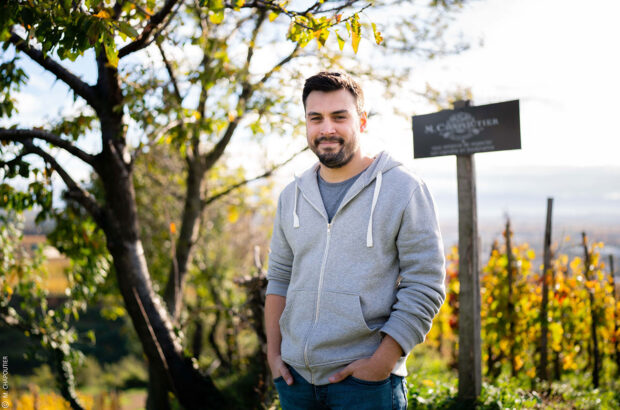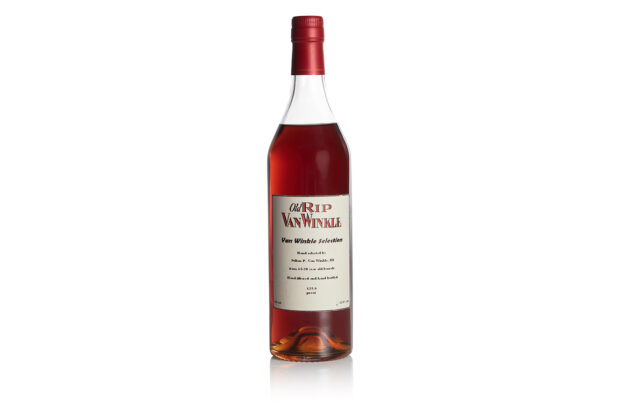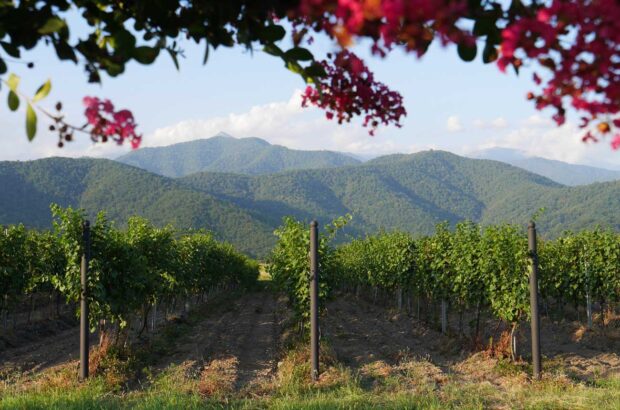Jane Anson reports on a tiny corner of Piedmont where 'slow wine' advocates are building a treasure trove of Italy's best wines.
In brief
- Piedmont ‘wine bank’ supported by Slow Wine movement contains 100,000 bottles and offers tastings for visitors.
- Where is the ‘Banca del Vino‘?
Read Jane Anson’s full column:
The tiny commune of Pollenzo is a little-known side note in Piedmont compared to the starry names of Alba, Barolo and Barbaresco.
Until 10 years ago it was remembered, if at all, as the site of a cluster of Roman remains, including an amphitheatre from 1st century BC that once hosted vast fight-to-the-death naval battles that were a specialised and particularly bloody form of gladiatorial spectacle.
The village was rebooted in the 19th century with the Agenzia di Pollenzo when oenologist Paolo Francesco created one of Italy’s first modern-style farms and wine cantinas on land owned by King Carlo Alberto of the Royal House of Savoy.
All that had slowly faded into history when Carlo Petrini, founder of the Slow Food movement, chose Pollenzo for the site of his University of Gastronomic Sciences.
Opened in 2004, the university offers courses that regularly make my favourite downtime (read ‘on deadline’) internet searches. Master of gastronomy, Master in the slow art of Italian cuisine, Master in food, law and finance… all designed when Petrini realised that if he wanted the Slow Food movement to truly go global, future leaders would be needed to put into practice the ‘good, clean and fair’ approach to food that he was advocating.
A few weeks ago I got to carry out my own pilgrimage here, to visit not just the university but the Banca del Vino, a Wine Bank that is part of the sister movement to Slow Food that celebrates ‘slow wine’. The producers are often organic or biodynamic, but more crucial is that they are authentic, traditional, committed to Petrini’s principles.
Related stories
After a quick caress of the brass plaque that announces the university entrance, I headed under a red-bricked arch into a large grassed courtyard and over to a series of low-lying buildings that were once part of Francesco’s Agenzia and now house the Wine Bank in an underground room that leads to the original 19th century cellars.
‘A library documenting the history of Italian wine’
This place is also something more ambitious than a simple headquarters for slow wine; it is the centre of a cooperative project established in 2001 that intends to gather a library documenting the history of Italian wine. For this, it contains wine donated from 300 estates across Piedmont and the rest of Italy. The selected producers – chosen by the Slow Food organisers – are asked for 60 bottles each, with one-third kept back for future generations and the rest either sold through the shop or used for tastings and other events after three years of ageing in the cellars.
‘The idea is to create a reference point for quality Italian wine, to both improve its image internationally and to preserve examples of the best bottles,’ Ileana Chiola tells me as we head into the darkened 2,000m2 cellars that also serve as a museum. Chiola studied in Turin before working here, rather than at the slow food university, but is from Piedmont and understands the challenges that this project is trying to address.
‘Many Italian producers bottle only limited amounts of wine and are not accustomed to keeping stock back. It means that the greatest wines often sell out quickly and are then consumed. Finding well-aged examples can be difficult. We want to rectify that problem’.
They’re getting to that aim slowly but surely – the wine bank contains 100,000 bottles displayed in original wooden cases (itself a fascinating look into just how much more creative Italian producers are in this area than many of their French counterparts) and laid out from the north to south of Italy, showcasing the main wine regions through their Slow Wine producers. Along the way you’ll browse through Fattoria di Felsina in Chianti Classico, Cantina Santadi in Sardinia, Tenuta San Guido in Tuscany and a who’s who of Barolo and Barbaresco from GD Vajra to Gaja alongside northern Piedmont stars such as Nervi up in Gattinara.
There is, you might remember, a super-collector in France called Michel-Jack Chasseuil who is wanting to do the same thing for his 40,000 bottle collection of 240 producers from 39 countries but he is dismissed as being an extremist by many, and has received little official support. Here in Pollenza the Wine Bank keeps things small and focused, concentrating only on Italian wines and on creating a viable business by making the initiative part of the Slow Food university.

Learn about Italian wine in the heart of Piedmont. Credit: Banca del Vino.
A new cookery school, restaurant and hotel attracts further guests to this quiet corner of Piedmont, while the wine shop is genuinely impressive, holding tastings that help further the educative aims.
You can taste through different soils types around Italy, for example, or blind taste older against more recent vintages or to identify specific wine faults. And the first wines to be laid down are just now becoming available – we had a wonderful 2005 Barolo that Wine Searcher lists with just one Swiss merchant today.
It will take time of course to prove the sustainability of the Banca del Vino model, but then Carlo Petrini has always been drawn to big ideas that need just a little dollop of crazy.
Wines to Try
La Mesma Gavi DOCG Comune di Gavi Yellow Label 2015
A family business run by sisters Paola, Francesca and Anna. This starts off fairly austere, then fills in the mid palate with a rich, creamy citrus and white flower flourish before pulling itself back in sharply for a flinty finish. An excellent aperitif-style wine, full of taut stretching and striking persistency. A reminder that the Cortese di Gavi grape is yet another reason to love Piedmont. 12.5%abv. 92 points
Cantina Del Glicine, Curra Barbaresco DOCG 2012
Curra is the oldest cru in Barbaresco, with clay and limestone soils. This wine is a gentle brick-red colour, lighter than many of its neighbours, showing both the effect of the cool clay in Curra and the gentle extraction and confidence in the floral and softly spiced expression of nebbiolo drawn from winemaker Adriana Marzi. The winery itself is located in the hilltop village of Nieve, and with its romantic vaulted cellars fit perfectly to the ideal of Slow Wine. On the palate you get a tannic handshake alongside the beautiful purity of redcurrant fruit and liquorice root. 14%. 94 points
Bricco Francesco Barolo DOCG Rocche Dell’Annunziata 2005
From one of the best known single vineyard sites in La Morra, with limestone soils sat at an altitude of 385 metres above sea level, this is now 11 years old and really starting to show the famous rose petal nose of Barolo. Rich and soft with the ripe berry fruit of a hot year but still fresh and hugely aromatic, with traces of mint and dark chocolate alongside the floral expression. From Rocche Coastamanga owned by the Locatelli family, this wine is made only in exceptional years and has lost little of its tannic structure. It’s stretching its muscles right now and makes for perfect drinking. 14%abv. 95 points
More Jane Anson columns:

Anson on Thursday: Where Cabernet is ‘a swear word’…
Big things are happening in Australia's Victoria...

Anson: If Steve Jobs had made wine…
Late Apple co-founder would have been a garagiste...

Jane Anson: Alsace is finally getting its act together

Jane Anson: Bordeaux’s oldest vines
What can be learned from 200 year old vines...

Anson: Bordeaux wine for craft beer drinkers
Can Bordeaux appeal to the craft beer generation?...







